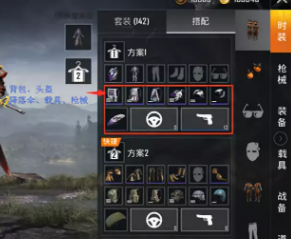cryptocurrency for- Top Knowledge
It is worth noting that the Political Bureau of the Communist Party of China (CPC) Central Committee held a meeting on December 9 to analyze and study the economic work in 2025. According to industry analysis, the overall tone of this meeting was positive, and the macro policy is expected to continue to increase next year. The meeting put forward "strengthening the regulation of unconventional and countercyclical policies", which was the first time that a major meeting mentioned the word "unconventional", or indicated that the follow-up policy measures would be more diversified. The importance of domestic demand expansion is further highlighted, and the scope and intensity of subsequent consumption promotion policies are expected to increase.Small-cap style clearly outperforms."The market of technology stocks is supported by policies, and the policies frequently mention the self-reliance and self-improvement of science and technology, such as artificial intelligence industry, self-controllable, new energy technology, etc. This kind of concept plate is mainly the participation of hot money and new retail investors, focusing on themes and tracks. Long-term expectations are hard to be falsified in the short term. Industries such as artificial intelligence are indeed in a stage of rapid development. Once hot money has a money-making effect, retail investors are easy to chase after it and push the stock price up. " Zhao Xi told reporters.
In this context, blue-chip stocks maintained their performance resilience. In the third quarter, the single-quarter growth rate of large-cap net profit represented by Shanghai and Shenzhen 300 increased significantly, with an increase of 8.75%. The performance of small and medium-sized stocks represented by CSI 500 and CSI 1000 dropped significantly, with growth rates of -14.7% and -9.4% in the third quarter respectively. In terms of industrial chain style, finance has been greatly restored, consumption has remained resilient, growth has continued to be under pressure, and the cycle growth rate has turned negative.Micro-disk stocks continued their strong performance this year. Since September 24th, the index of micro-disk stocks has risen by 61.4%, while only one of the 402 stocks in the sector has fallen, with an average increase of 44.03%, which greatly outperformed the indexes of Shanghai and Shenzhen 300 and Shanghai 50. The cumulative increase of 19 stocks including Renzhi (002629.SZ), Shandong Huapeng (603021.SH), Xingtu Xinke (688081.SH) and Lianxiang (603272.SH) exceeded 80%.For the reason of the market style deduction, Zhao Xi, the investment director of Tuopai Fund, told the First Financial Reporter that since the macroeconomic data has not improved significantly, it is difficult for the macro economy to support the core assets, and most investors' sense of the whole economy is not high enough. Although the weighted blue chips and fund heavyweight stocks have valuation advantages, they lack rising logic. In this context, hot money and new retail investors have repeatedly speculated on the emerging science and technology around the policy.
SDIC Securities Research Report pointed out that from the perspective of capital, this phenomenon (micro-disk stocks hit a record high) is naturally easy to explain: the core of the incremental fund group is retail hot money, and the pricing power is not in the hands of institutions.Micro-disk stocks continued their strong performance this year. Since September 24th, the index of micro-disk stocks has risen by 61.4%, while only one of the 402 stocks in the sector has fallen, with an average increase of 44.03%, which greatly outperformed the indexes of Shanghai and Shenzhen 300 and Shanghai 50. The cumulative increase of 19 stocks including Renzhi (002629.SZ), Shandong Huapeng (603021.SH), Xingtu Xinke (688081.SH) and Lianxiang (603272.SH) exceeded 80%.According to the statistics of the First Financial Reporter, the 100 stocks with the smallest closing market value on September 23 have almost doubled up to now. In the same period, the average increase of 66 stocks in the market value component was 19.2%, and the average increase of the fund's heavy stocks was 27.5%, which was far worse than that of small-cap stocks.
Strategy guide 12-13
Strategy guide 12-13
Strategy guide
Strategy guide
12-13
Strategy guide 12-13



























